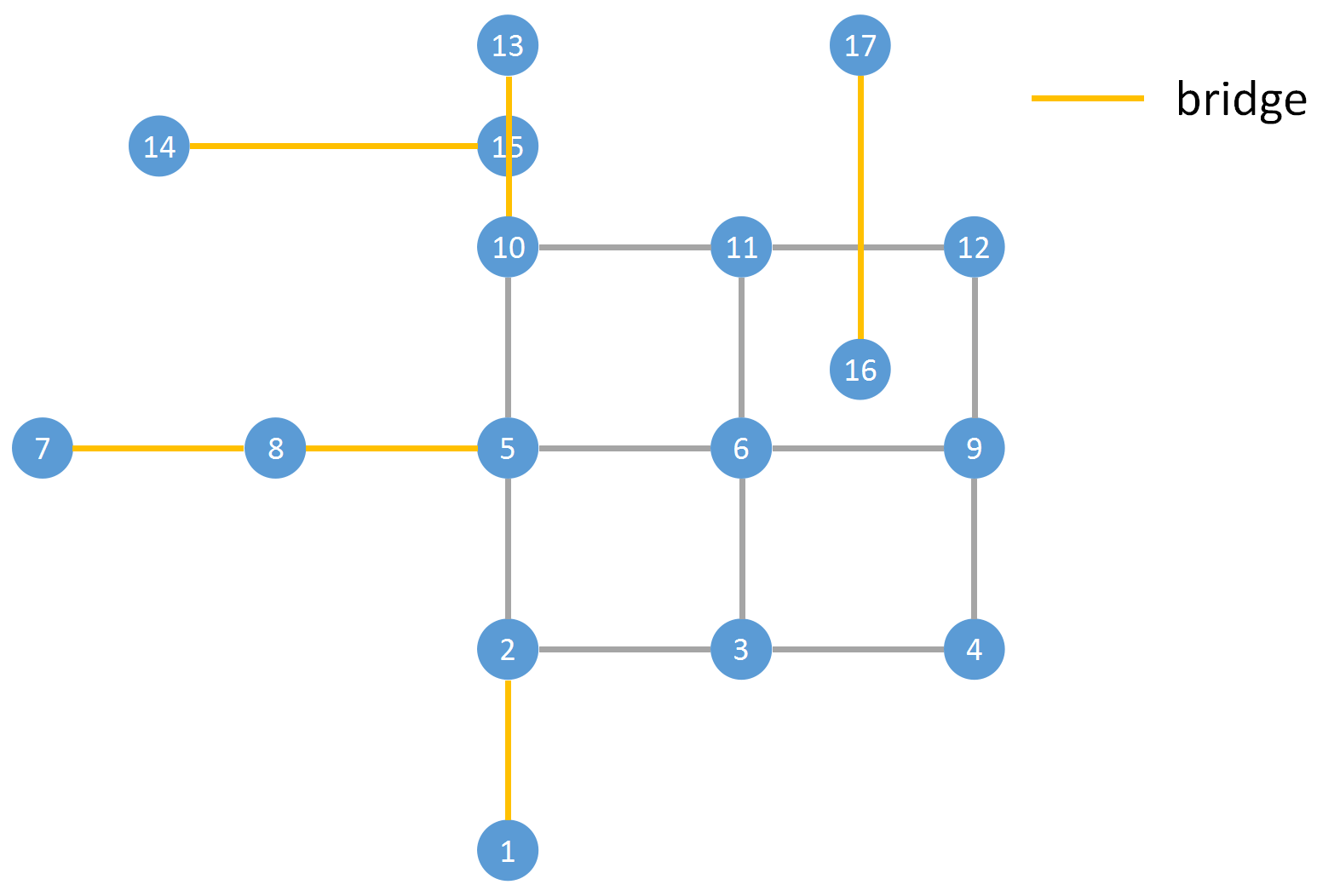pgr_bridges - Return the bridges of an undirected graph.
Warning
Experimental functions
A bridge is an edge of an undirected graph whose deletion increases its number of connected components. This implementation can only be used with an undirected graph.
The main Characteristics are:
- The returned values are ordered:
- edge ascending
- Running time: O(E∗(V+E))
pgr_bridges(edges_sql)
RETURNS SET OF (seq, node)
OR EMPTY SET
The signature is for a undirected graph.
| Example: |
|---|
SELECT * FROM pgr_bridges(
'SELECT id, source, target, cost, reverse_cost FROM edge_table'
);
seq | edge
-----+------
1 | 1
2 | 6
3 | 7
4 | 14
5 | 17
6 | 18
(6 rows)

| edges_sql: | an SQL query, which should return a set of rows with the following columns: |
|---|
| Column | Type | Default | Description |
|---|---|---|---|
| id | ANY-INTEGER |
Identifier of the edge. | |
| source | ANY-INTEGER |
Identifier of the first end point vertex of the edge. | |
| target | ANY-INTEGER |
Identifier of the second end point vertex of the edge. | |
| cost | ANY-NUMERICAL |
Weight of the edge (source, target)
|
|
| reverse_cost | ANY-NUMERICAL |
-1 | Weight of the edge (target, source),
|
Where:
| ANY-INTEGER: | SMALLINT, INTEGER, BIGINT |
|---|---|
| ANY-NUMERICAL: | SMALLINT, INTEGER, BIGINT, REAL, FLOAT |
| Parameter | Type | Default | Description |
|---|---|---|---|
| edges_sql | TEXT |
SQL query as described above. |
Returns set of (seq, node)
| Column | Type | Description |
|---|---|---|
| seq | INT |
Sequential value starting from 1. |
| edge | BIGINT |
Identifier of the edge. |
Indices and tables